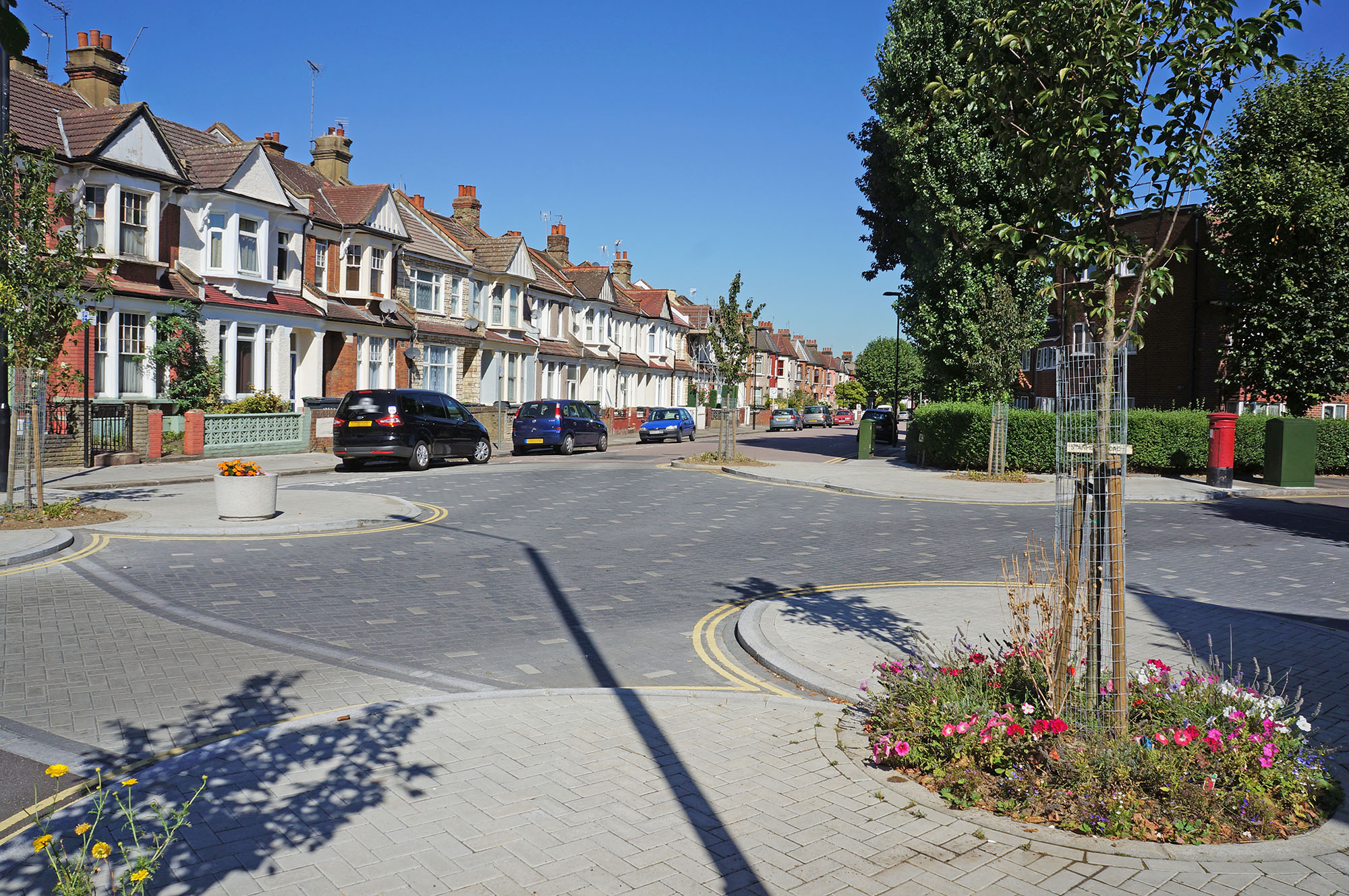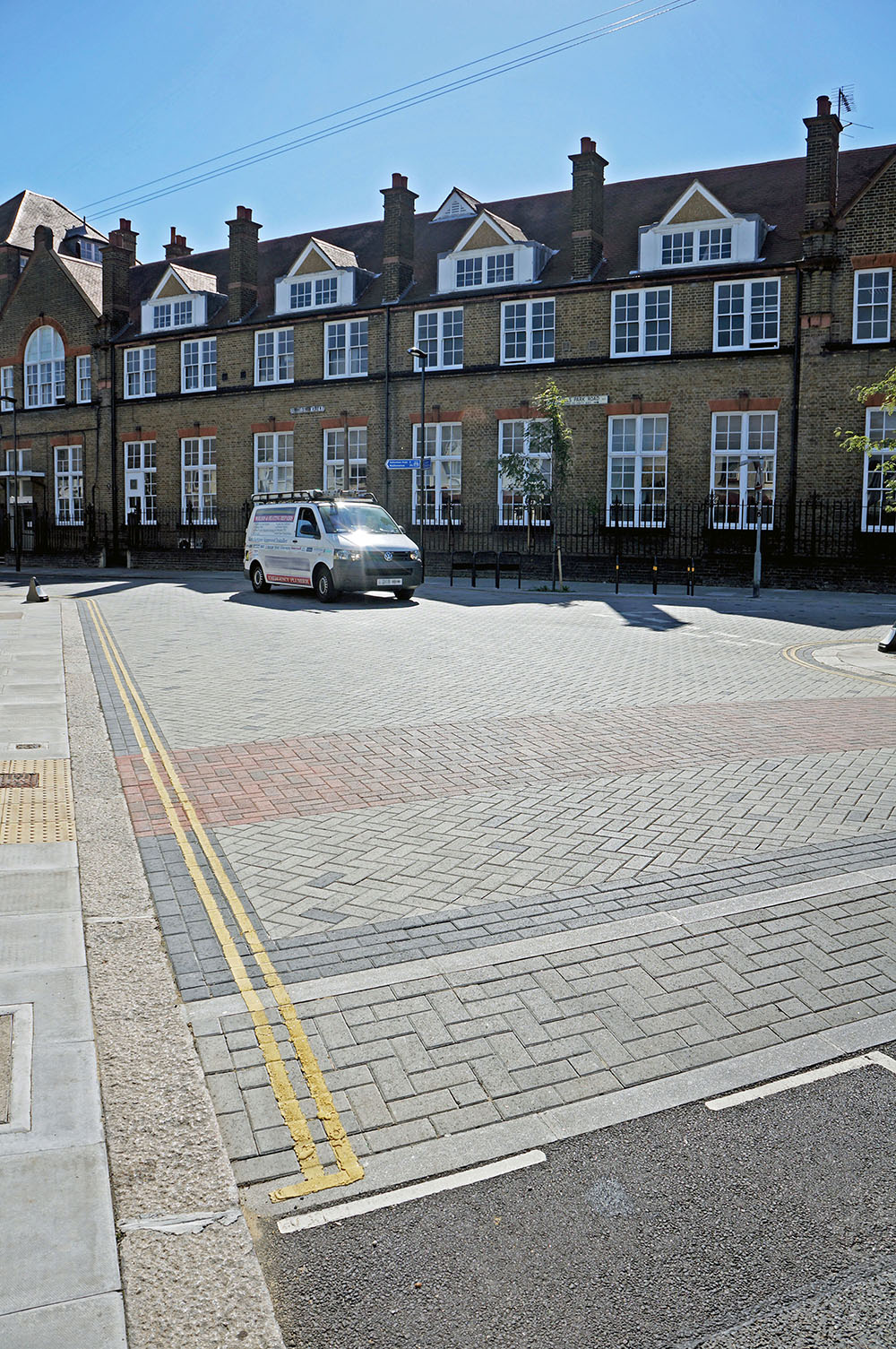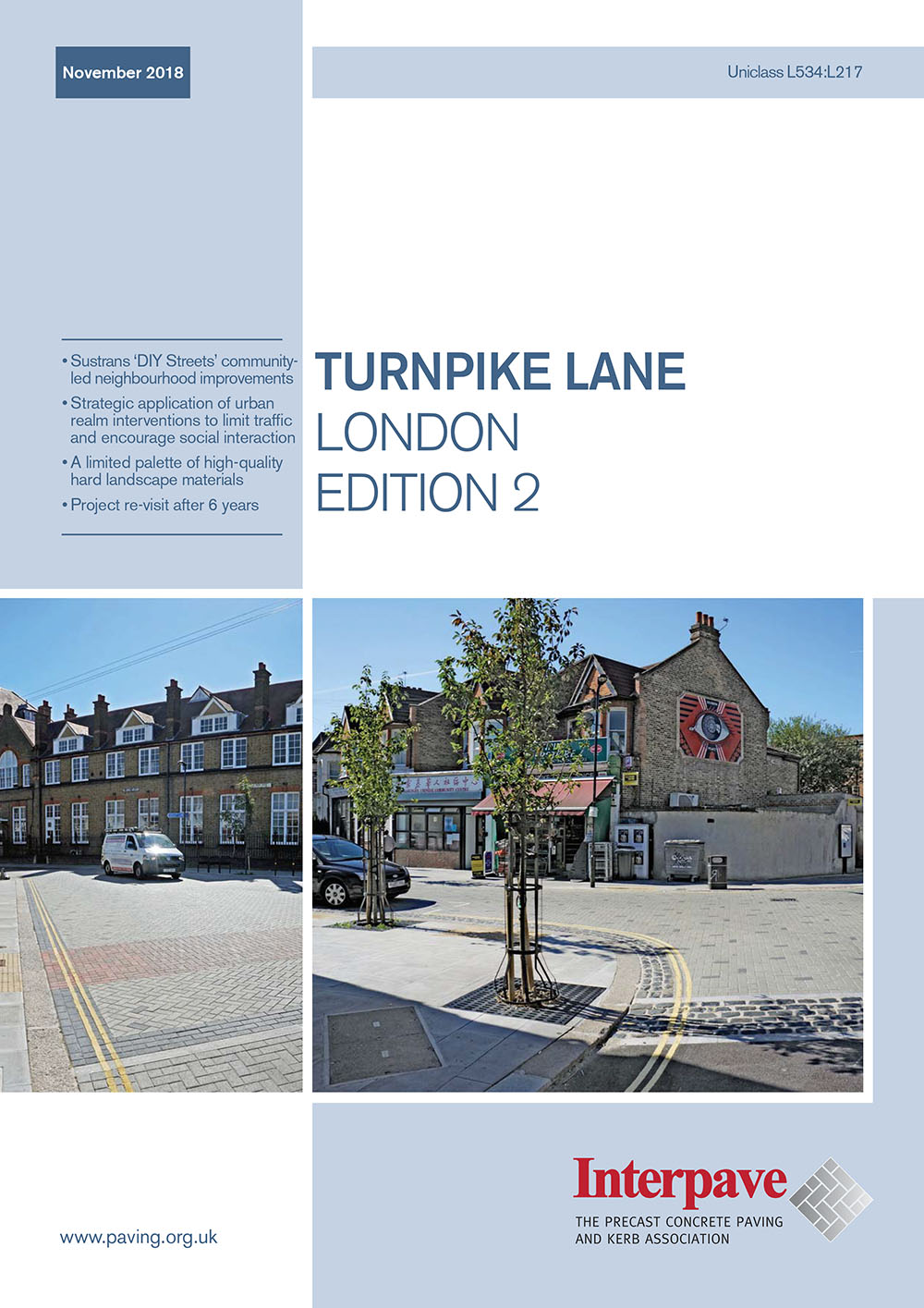Paving for Communities

Interpave has published a new case study exploring the transformative power of straightforward interventions to the paved environment – designed with full community involvement – offering lessons for new development design as well as regeneration.
The case study considers a joint initiative between Haringey Council and the charity Sustrans (as part of the charity’s ‘DIY Streets’ programme) to provide long-lasting improvements to an established residential area of north London. An essential component of the project is the use of precast concrete paving with a limited palette of colours and styles to establish local character and influence the way that drivers behave.
Central to the strategy was a focus on the design and re-paving of key nodal points of the local street network to reduce traffic volume and speed while, at the same time, providing a better external environment for the community. This has been achieved – and without the need for dedicated ‘Home Zones’, extensive shared surfaces or designated 20mph areas.
Concrete block paving with chamfered edges is used to surface raised table and other features throughout the project. The community chose grey blocks with a regular pattern of individual charcoal blocks interspersed. This effectively breaks up the appearance of the surface and clearly separates it from the amorphous black
asphalt roads – particularly from a driver’s viewpoint – without recourse to strong colours and patterns. Red ‘Brindle’ blocks are also used to highlight crossing points in some cases.
The original 2012 case study has been updated with photos taken 6-years later, demonstrating that the precast concrete paving continues to perform well, delivering the original aims of the project. The new case study can be downloaded here and other projects and case studies viewed here


